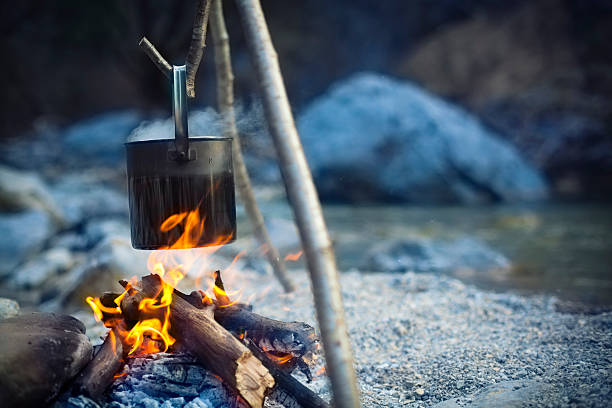Bushcraft involves living in the wilderness using natural resources. It includes a variety of skills such as making fires, preparing food, and navigating through difficult terrain.
Unlike survivalists who seek to get back to civilization, bushcrafters enjoy nature and leave no trace. The skills they learn can also be used to protect themselves from predators and other dangers.
Survival skills
Survival skills refer to the ability to sustain life in a wilderness environment. They include activities like hunting and tracking, identifying edible plants, and starting and maintaining a fire. These skills foster self-reliance in adverse situations and cultivate a deep connection to nature.
For those new to the outdoors, it can be intimidating to learn survival skills. It is helpful to break down the process into small increments, such as practicing knot tying or fire building skills on a regular basis.
In addition to learning survival skills, it is important to practice navigation techniques before going into a remote area. Also, it is helpful to let someone know where you are and when you will be back so that they can call for help if necessary.
Shelter building
The ability to create a refuge from the elements is central to Bushcraft. As such, shelter building is a skill that requires practice and ingenuity. It is also a highly practical skill that can save your life in the wild.
The type of shelter you build will depend on the environment and resources available. For instance, in cold environments, you will want to ensure your shelter is well insulated. This could mean using animal hides or natural debris to insulate and weatherproof the shelter.
Unlike survival skills, which focuses on emergency preparedness, shelter building is more of a long-term strategy. This is because you can make your shelter fit the surrounding terrain, which makes it more effective. For example, you can use the incline of the ground to direct rain away from your sleeping area.
Food preparation
Food is a necessity for human survival and preparing it properly can be a challenging task. This is because it can easily become a breeding ground for microbes and spoil when handled incorrectly. This includes washing hands, sanitizing surfaces, and cooking to the right temperature.
It is important to note that not every bushcraft knife is ideal for food preparation. Many of these knives have a scandi edge and convex grind that make them great for wood work but not so good for finely chopping vegetables. You need a blade that is thinner towards the tip to perform food prep tasks.

One such knife is the Mora Kansbol. It has a compound grind that makes it ideal for both wood craft and food preparation.
Navigation
Navigating through wilderness terrain requires a good set of reliable tools. One of these is a compass, such as this Suunto MC-2 model. Its accuracy makes it a must-have for bushcraft. Besides ensuring safety, a quality compass is also useful for learning natural navigation skills.
You can use a compass to judge distance and estimate how long it will take you to reach your destination. Alternatively, you can use natural features to find your way in the wilderness. Learn more about these methods during our weekend bushcraft course.
Bushcraft differs from survival in that it is geared towards the enjoyment of nature and its environment, not merely getting out there and surviving. Nonetheless, there are many similarities between the two disciplines. Both involve a degree of risk and require some level of preparedness.
First aid
Having the right first aid kit is essential to bushcraft. The M-FAK Mini First Aid Kit from Survivor Supply is an ideal kit for bushcrafters and anyone who enjoys camping in remote wilderness areas.
When most people think of Bushcraft they picture a Ray Mears-type survival expert, face smeared with camouflage mud and a homemade bow held aloft. In reality, however, the idea of Bushcraft is much broader than that.
The term “bushcraft” is gaining popularity, partly thanks to the likes of Cody Lundin, Les Giddins, and Mors Kochanski and their TV programs. It’s an outdoor trend that focuses on living harmoniously with nature using only what you can carry and sustain yourself in the wild for protracted periods of time, often voluntarily. In contrast, hiking is a recreational activity where the purpose is to complete a route and psychologically reboot.